The Golden Thread

What is the thread that ties our lives together, underneath all of the details of family, friends, work, hobbies? What is the point in being here? I wanted to know the answers to these kinds of questions as a little kid. I remember this sense of lost-ness behind the questioning and a sense of homesickness, but I wasn’t sure what I was pining for. The questions were not covered in school or in family conversation, and being told that we are created by some ‘God’ person, or that it was best not to think about this kind of thing did not give me any peace.
My Dad died in 1995, age 50, from Oesophageal cancer. Given that we never talked about death in any meaningful way as a family we really struggled with the aftermath of his passing. It felt like our family, and all of life, was left with a huge irreparable painful hole in it. I decided that there could be no God as there was no love, logic or meaning in dads leaving. I decided that there was nothing to believe. I was in pain, so to avoid feeling the avalanche of emotions I opted for numbing with over-working, partying and multiple forms of distraction instead. It is quite a ‘normal’ way to live really, and I did it for years, all the while feeling so empty that I contemplated taking my life on many occasions. Thankfully something in me kept convincing me to hang around. I sought help for how I was feeling through reading, counselling, therapy, yoga, meditation etc. Beginning to engage with a lifetime of unresolved emotions felt like an insurmountable task but I did find moments where I felt a greater sense of calm, with a little more space to breathe.
I was passionate about what was happening to our planet so I decided to do a Masters degree in Advanced Energy and Environmental studies in CAT (The Centre for Alternative Technology) Wales, in 2005, so that I could understand the problems in our world and help find answers. I felt ALIVE on this course for the first time in many years; I was surrounded by others who shared a passion for learning how to design and create in more sustainable ways. Within the course I became fascinated with how systems worked: systems thinking, construction ecology, circular economics etc. While studying I also joined a little group in Ireland called the Dublin Dance co-op and I began to dance, and to learn about Movement Medicine: this was a chance to move freely; no steps, just feeling my body, mindfully moving and connecting with others on the dance floor. Even though at this time my personal life was in tatters and I was in the process of selling my house, between connecting with my course companions around their shared passion for our earth and connecting to others on the dance floor I felt like I was opening to something different in life.
One day working on a paper for one of the masters modules: ‘a systems approach to implementing sustainable solutions’: I was looking at how all solutions need to be understood as part of overall systems: my logic went: “…everything can be viewed within a system. So everything has a place within some system or other: water in the hydrological cycle, carbon in the carbon cycle, plants in their cycle of seed, plant fruit, decay, regrowth. And it all sits in our solar system, which sits in our galaxy and on it goes. So, everything ultimately is connected in one, great, interconnected system.” And something suddenly felt very clear in my mind. “Everything is connected. So there is only ONE great everything…. nothing separate… there can’t be any such thing as ‘separate’ or ‘away’…. because everything has a place in a system.” I realised what this idea of ONE or ONENESS or what some would call GoD was: it was the fact that everything is connected: interconnected.
It was absolutely simple, but there was something profound in how I was realising this, and it helped change my outlook on life. It gave me a map and a locating system for myself in my lifepath. I understood that the thread is our interconnection and that underneath everything in my life the power of creativity to create connection and community was my navigation system. I knew the key was in creating connection and communities, so I became very curious about how communities worked.
That was in 2006, and In January 2018 I was in my 15th month on the road exploring eco-communities and in my 6th month in Colombia. I was ‘full’ of my experiences of these different communities: how different each one is with its unique configuration, ethos and collective culture. I had mostly been in intentional communities formed by people wishing to create new and different ways of living but I remained curious about the ancient communities: I wanted to be closer to some of the indigenous peoples who’s land (Colombia) I was visiting. I had this idea of learning about the ‘thread’ that holds their communities together.
As I travelled I was becoming more and more aware of the deep effects and the indelible scar of colonialism on the country. The imprint of colonisation was strong in all towns and cities: art, architecture, food, businesses and tourists brought in from Europe and the US. I did not want to seek out indigenous groups and buy my time with them: it just feels like a modern version of colonisation to me: “it is my right to buy this, own this, see this…”. I didn’t feel it was my right to barge into anyone’s community much less the communities of the people who have lived on this land for millennia. I was not going to push my way anywhere; I was naively just hoping that with an openhearted desire I could somehow simply be near one indigenous community.
North of Buritaca, Caribbean Coast, Colombia
I travelled north in search of a quiet place by a river where I could be in a small community, work on the land and meditate. I headed to the Sierra Nevada Mountains. These mountains are known as the heart of the world by the Kogi people who live there: The Sierra Nevada de Santa Marta ..is the world’s tallest coastal mountain range. And its unique structure means that it is virtually a miniature version of the planet, with all the world’s climates represented. The mountain is quite literally a micro-cosmos, a mirror of the planet on which every ecological zone is represented and in which most of the plants and animals of the planet can find homes.
Meeting the Caribbean coast of Colombia
In early January I arrived to Palomino on the Caribbean coast and made arrangements to visit a small new eco-community in the mountains; a community called Madre Sierra. It had been recommended by a friend because of the special connection they have with the local Kogi community. Travelling in a small group by motor bike and hiking I finally got to this tiny community: at the foot of two mountains, beside a stunning bubbling river, with a little garden, a beautiful community space (malocca), a simple covered kitchen space, a few bodegas, a dry toilet, hammocks and some tents. Living conditions were extremely minimal: sleeping in hammocks or tents, bathing in the river and, as there is no electricity, cooking on open fires. I arrived in the evening with three others to an empty camp we did an arrival ceremony and sat singing around the fire.
The malocca at Madre Sierra
Hammocks in the malocca
The next day more people arrived and we set up some tents and got orientated on what work there would be to do. I chatted with fellow volunteers and members of the community learning about the place, the people and how it came about. The community was formed a few years ago when a couple, Luciana and Beto, came to learn from the Kogi Mamos in the area (Mamo is a shaman or holy man). Over time, a unique relationship formed: one of mutual trust and understanding. After a number of years Luciana and Beto formed The Earth Wisdom Foundation and began the community on land to be held in trust in the Sierra Nevada’s and formed under the on-going guidance of the Kogi. Luciana is from Argentina, Beto is Colombian and many members of the foundation are from different parts of the world, but the community is based in indigenous wisdom and respect for the earth. There have been about 6 people on site for about 8 months at the time of writing. They make their money from running courses through their University of Earth Wisdom: courses on permaculture, bio-construction and indigenous wisdom. They also accept volunteers who pay COP20,000 (about €6) per day to cover food and expenses and do 4 hours of community service each day.
The kitchen at Madre Sierra
…with a back drop of mountains
My second day there I was sitting in the malocca chatting with some others when over the knoll of a little hill a group of six small people dressed in white woven shirt/dresses walked towards us. It was an elder Kogi man, a group of four Kogi women and 3 children. I smiled the smile of someone witnessing an apparition. We gathered in the malocca with our visitors and very simply sat and chatted for a few hours. They talked about friends, the land and the local area. Lunch was made and we all ate together. The children played, the women chatted and crocheted their beautiful bags and we just sat together like regular neighbours in any part of the world.
The pathway arriving into Madre Sierra
It felt like an absolute blessing to just to be around these people, not looking for anything, just to know them. I am brought to tears of appreciation writing this: there was something about the authenticity and the absolute privilege to just sit with people who have remained in a sacred relationship to the earth for centuries: unaffected directly by colonisation. The simplicity of this encounter of friends ‘around for a chat’ felt very authentic and very beautiful for me to witness. Over the coming days different Kogi neighbours dropped by, just over for a chat or with something to share or to sell. I loved seeing them arrive over the brow of the hill and join us in whatever was happening. It was always unannounced and always random and astoundingly simple and unexpected in terms of what I had learned about the Kogi: they have a reputation for being very unfriendly.
It is said that there are currently about 20,000 Kogi living in the Sierra Nevada Mountains. “The Kogi are the last surviving civilization from the world of the Inca and Aztec, and their cities are untouched by our world.” …They “are direct descendants of an ancient civilization known as the Tayrona (Tairona). They share the mountains with three other groups of indigenous peoples: the Arhuaco, Wiwa, and Kankuamo. They each speak distinct languages but share the belief that they are the guardians of the heart of the world. At the core of their spirituality and cosmology is the belief that the mountain range is a living entity, which, before being created by the great creator Sezhankwa, existed in the spiritual universe. The great creator then birthed the people of the Sierra Nevada and gave the mandate to uphold her Original Law: that all creation must be protected and nurtured.”
If you would like to meet the Kogi, the advice from the Tayrona Heritage Trust: is: “DON’T. Just leave them alone.” The Kogi have lived in the Sierra Nevada for millennia and traditionally have not welcomed strangers. The communities consist of Mamos (priests), Cabo’s (guards) and vassals. Families tend small plots of land but they do not own land separately, they work communally. They live in a very structured and well organised community, leading healthy active lives: the Kogi average life expectancy is 90 years.
They are guided by the moon, visions and ancient spirituality: they believe that a community cannot survive without a spiritual awareness; that there is no community without connection to their ancestors and the Great Spirit. The Kogi talk in metaphors, and symbols like our old stories, using archetypes and stories to teach. They talk about life with such respect and grace: all living things are linked and are imbued with intelligence and knowledge that can be shared. They have lived in this way, in what I can only truly describe as an intimate relationship with the living world in an unbroken way for as long as history. They managed to remain intact as tribes living freely and keeping to themselves for thousands of years, then in 1992 the Kogi agreed to have documentary maker Alan Ereira film them so that they could send a very important message to the world.
The documentary that was made was called “The Elder brothers warning”. The Kogi say that humans were created to take care of the earth and of all living things. To them the earth is family; their mother; a living being with bodily organs just like us: rivers as veins, trees as lungs, the wind as breath and her heart sits in the Sierra Nevada mountains, where they have been taking care of the world for centuries: they have been keeping her alive. They know the mountains intimately and say that they represent the entire world. In recent decades they have witnessed changing bird migrations and the lack of snow in the highest regions of the Sierra Nevada. They say it is due to the activities of the younger brother; activities such as the nearby building of processing plants, the draining of marsh lands, the damming of rivers etc. The Kogi call us in the west the ‘younger brother’, they are the ‘older brother’. This reference is used in many indigenous tribes throughout the Americas. They say that we were separated a long time ago; younger brother forgot who he was and who the earth is and he started to hurt his mother (earth). They are telling us that the world is suffering at our hand and that we need to stop hurting her because she is dying. They warn us to wake up to what the world is: a living breathing being, family that needs to be respected, or she will die and all of us along with her.
The Kogi hoped their warning would be heard. They waited, but the world did not listen. So again in 2012 they asked Alan Ereira to help make a second documentary to give the world a clearer message. This second documentary is called ‘Aluna’. Aluna signifies the connection between the manifest and the unmanifest worlds: it is the thread that connects all things.
The Sierra Nevada Mountains were rich in gold and the Tayrona people were wonderful goldsmiths. In Santa Marta when I visited the Gold museum, the intricacies and the incredible talent of these people stunned me, but also I felt a profound sadness looking at these crafted pieces that were caged behind glass. I learned that many of these pieces were originally pagamiento (payment) to the gods of animals, plants and of the elements; gratitude for life and blessings for the future. Pagamiento is a strong tradition with the local indigenous tribes. The ornate gold objects were hung in trees and buried in tombs to signify sacred places. These places were said to help join the unmanifest world with the manifest world. The Kogi believe that our job as humans is to communicate between the two worlds to protect earth.These sacred places signify places where Aluna threads life together. Since the beginning of colonisation this gold has been plundered and sold: a few years ago small finely carved pieces were getting $20-30,000 in the US market. Looters spent decades digging up the tombs in the Sierra Nevada: desecrating graves, removing and selling the gold. Most of this gold that connected our worlds now sits in museums and private collections and the Kogi say that the threads that hold the worlds together are unravelling. In the second documentary the Kogi walk in ceremony along the Caribbean cost of Colombia to many of the now desecrated sacred sites, weaving a golden thread to symbolise how everything is connected.
The Kogi needed no ‘enlightenment’ to find a sense of connection, they intrinsically understand that all of life is connected, and so when one part of life is damaged it damages the whole. The Kogi talk not just about what we are doing to the planet, they talk also about how we think: how we perceive the world:
“The Kogi say that without thought, nothing could exist. This is a problem, because we (the younger brother) are not just plundering the world, we are dumbing it down, destroying both the physical structure and the thought underpinning existence.”
The way we perceive the world is as if it is a commodity to be used for our pleasure: to be appropriated and consumed. This is the mind of a coloniser: it is my right to take what I want, to go where I want to use whatever I want…I am entitled to it!’ ‘I deserve it’. This is very far removed from the idea that the earth is flesh and blood: family to be loved, respected and cared for.
“The lines of my ancestors” (2014) I painted this piece in 2014 before knowing the Kogi. I painted and then sewed golden threads connecting the lines of my ancestors from the spirit world to our manifest world.
While I was in Madre Sierra, Luciana shared with us some of her years of experience of learning from the Kogi. She shared simple rituals and practices in the community. Some as simple as cooking together and gathering around the fire. On arriving I experienced a traditional arriving ritual: asking permission to be on the land, setting intentions for our stay and making pagamiento (payment). The Kogi appear to take nothing for granted from nature: they offer thanks and payment for pretty much everything in life: this payment can be physical gifts of fruits, and crops and it can be grateful thoughts and images of abundance. It is a very beautiful ritual to bring into daily life. Before departing from the community we did a small ritual to set our intention for the journey ahead. So often we arrive and leave with out much consciousness. I really appreciated these pauses to honour the earth and the path that carries me.
There are also individual ceremonies that relate to our own cycles and how we relate to nature. One is a ritual for women: Luciana works with the menstrual cycle and on arrival at the community all women are asked if they are bleeding. If they are, they take a number of days to take a retreat. As I am generally a very shy person it is a strange thing to share this: I had started to bleed the day I arrived. I have been around many groups of woman who gather in Red tents and celebrate the menstrual cycle but I have remained shy of these gatherings, and embarrassed of this most natural of bodily functions. So I resisted taking this retreat at first, and wanted the ground to swallow me up when my ‘cycle’ was mentioned in the community meeting: “Sinéad is bleeding and so she will be taking time to retreat.” It all a very normal part of community here and this retreat comes as guidance from the Kogi so I decided to ‘go with it’ and just see what it was like to honour my body rather than ignoring it.
So for the retreat women (or in this case woman) stays in a particular part of the site: near the community, sleeping and eating separately, with time and space to meditate and offer her blood to the earth. She does not work, she has her food brought to her, she does not bathe in the river. She can talk to others but it is advised to preserve all energy for meditation and contemplation. I sat in the area requested and spent my first day meditating on how it wasn’t fair that I wasn’t allowed into the river, and on my guilt for not contributing to the chores, like everyone else. I chose to share my feelings of frustration with every one on site. I recognised that I needed some guidance and encouragement to do this retreat, so I talked with Luciana. She described this experience as a blessing and a privilege: an opportunity to honour being a woman and to contemplate on what menstruation is for me, how it has been for the women in my family, and for all women. It is an opportunity to consciously let go of things that are no longer serving.
I went back to my rock with a renewed sense of purpose. I sat with the trees, the mountain, the rocks and the birds, my history…and my paints. I carried out all the details of the daily suggested rituals. And for the first time in my life I sat with what this monthly bleeding meant to me and the women of my ancestral line.
Over the years, I have been prone to fainting and vomiting during the first days of my menstrual cycle, I have struggled with the fatigue and exhaustion, but like all women in society I learned to ignore my body: I have learned to get on with things and act as if nothing is happening. But something is happening and our society does NOT acknowledge this absolutely natural function other than to suggest how we might hide it. Menstruation is seen as a burden, a weakness and a hassle. But in many traditional communities it was, and still is, seen as a great blessing for a tribe. Traditionally in a tribe everyone works, creates, prays and heals for everyone else: what one does, is done for all of the community…because all things are connected. When one woman bleeds, she bleeds for all the community. She rests and honours life and makes offerings to life. She does it for all of the community. For me it is a stunningly beautiful and respectful way to live. I learned a lot: I found my time of rest to be a truly great blessing filled with ease, insights and gratitude for all of women kind.
Some painting from my retreat
I had just a week in this little community, but I can feel the richness of it; richness underpinned by what the Kogi are teaching the community about living in closer relationship with mama earth. My experience was one of ‘letting go’ of another layer of grasping at the world and to instead BE at ease. Very simply: this had a quality of ‘coming home’ and it soothed that sense of pining that I used to have as a child. I see that this way of being in connection with life is a practice made up of so many little things that we can do in our day to day lives, and I wonder what it is from this experience that can inspire you to bring some small positive change in your life.
- We rush around from place to place and from one event to another without thinking: but we can practice pausing for even a few moments as we transition from one place to another.
- We ignore our bodies pains by dulling them with painkillers but what might happen if we stop and pause and listen to our bodies, or bring our aching bodies to the earth, to a forest or a beach to simply BE there for a while.
- We have forgotten what the earth is: the Kogi say that if we knew that the earth could feel that we would stop hurting her. To know her again we need, like in any relationship, to give her our attention: again this could be a practice of listening and Being in nature and remembering that you are nature. When was the last time you stopping and spent time looking at the tiniest detail in nature: a flower or a leaf or simply listening to the sounds of nature? Not trying to figure anything out but simple listening. Do yourself and our world a favour: stop and simply BE for a while: it cannot hurt.
- In ‘Aluna’ the Kogi say that the rivers connect everything: “You don’t have to abandon your lives But you must protect the rivers” While you are gaining proficiency in learning to listen to yourself and to remember your mama earth, you can learn about your local river and you can learn how you can best protect it. Most rivers are being polluted in some way: groups are organising clean up days, petitioning for the cessation of dumping and protecting nature around them. And there is a group of people who are working on creating Rights of Nature i.e. recognising a river or a mountain the right to life. You could see where you are drawn to make a connection.
In many ways we do not need a message from a group of small indigenous people in an isolated mountain range in Colombia, our lives and our view of the world is so very different to theirs, but, we already know that we are causing great pain to our planet. We can feel helpless in the face of this devastation. But we can use our ears to listen; to be reminded that everything is so very perfectly interconnected and to be reminded that we have the responsibility to BE the guardians of this planet. When I spend time in nature I find myself breathing a sigh of relief as I realise more and more that this ‘thread of connection’: Aluna, is exactly the meaning of life and the point of us being here.
Thank you to the Sierra Nevada Mountains and the Caribbean Sea, to the rivers of all of Colombia, to its people and the dreams of a healthy world that I hope with all my heart that we will keep alive, together.
“The man who sat on the ground in his tipi meditating on life and its meaning, accepting the kinship of all creatures and acknowledging unity with the universe of things was infusing into his being the true essence of civilization. And when native man left off this form of development, his humanization was retarded in growth.” Chief Luther Standing Bear from “Touching the earth” by T.C. McLuhan:
REFERENCES
- The Kogi – Background
- KOGI
- From the Heart of the World: The Elder Brothers’ Warning – Kogi Message to Humanity (1990) Documentary by Alan Ereira
- ALUNA (2012) Documentary by Alan Ereira
- Aluna youtube link
- The way of the Kogi – The Kogi see the Sierra Nevada Mountains as a sacred mountain where their consciousness and wisdom live.
- The black line sacred geometry
- Fundación Saberes de la Tierra (The Earth Wisdom Foundation)
- Tairona Heritage Trust
- Rights of nature
- McLuhan T.C. (1973) Touch the Earth – A Self Portrait of Indian Existence Sphere Books Ltd

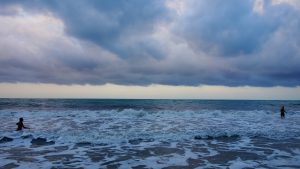
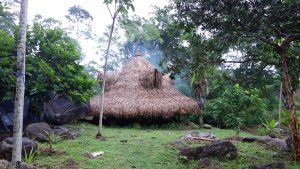
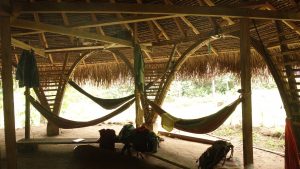
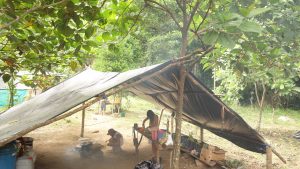
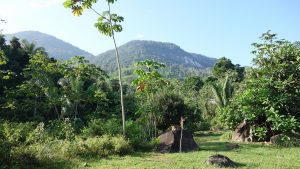
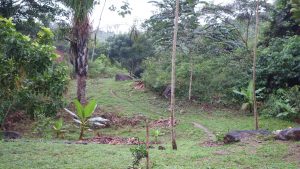

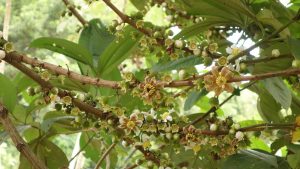
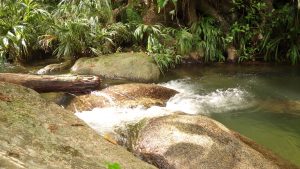
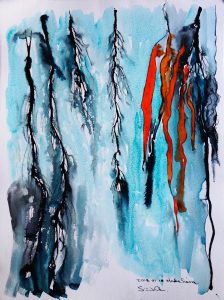
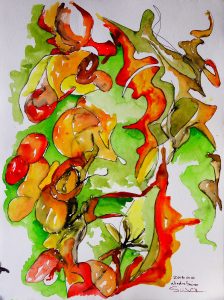

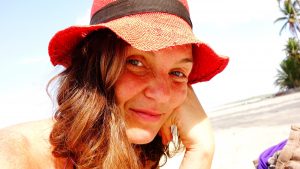
Recent Comments